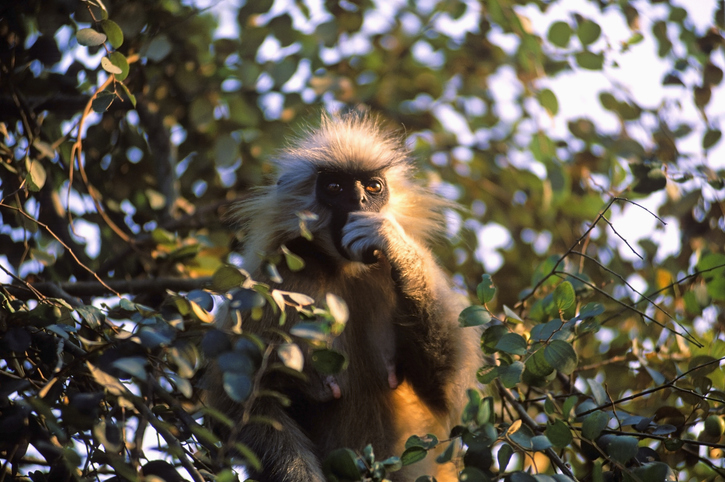The golden langur, a rare primate species endemic to the Indo-Bhutan border region, is facing a severe threat of extinction due to rapid habitat loss and deforestation in Assam, according to recent research findings.
Dr. Jihosuo Biswas, a senior primatologist at the Primate Research Centre Northeast India, reports that over half of India’s golden langur’s habitat has disappeared in recent decades. This loss is particularly pronounced in the southern part of its distribution range, specifically in the Kokrajhar and Bongaigaon districts of Assam.
“The main driver of this habitat loss is deforestation, exacerbated by the conversion of forests into farmland and human settlements,” Dr. Biswas said. He added that this transformation has led to the fragmentation of once extensive forested areas into smaller, isolated patches, further jeopardizing the species’ survival.
The golden langur (Trachypithecus geei), an obligate canopy-dwelling primate, is primarily found in four districts of western Assam and six districts of south-central Bhutan. As arboreal primates, these langurs are particularly vulnerable to habitat fragmentation and linear infrastructure development.
Dr. Biswas highlighted the increasing risks faced by these primates, including road accidents, electric hazards, and higher exposure to parasites. A comprehensive study on traffic behavior along State Highway 14 (SH-14) revealed that in 71% of observed cases, golden langurs attempted to cross roads at ground level, disregarding traffic, while only 29% used existing canopy connectivity.
To address this issue, researchers have implemented innovative solutions such as artificial canopy bridges (ACBs) in high-risk areas. These bridges, constructed using materials like HDPE pipes and plastic ropes, aim to provide safe passage for the langurs across fragmented habitats.
“We began designing and constructing artificial canopy bridges, collecting all necessary measurements and data for bridge construction,” Dr. Biswas said. The team has installed various types of bridges, including bamboo bridges, mixed bamboo-cum-rope bridges, and pipe bridges, to encourage the langurs to use safer crossing methods.
Despite these efforts, the situation remains critical. Between June 2022 and February 2024, seventeen road collision incidents involving golden langurs were documented along the Nayekgaon to Charaibari stretch of SH-14. Six of these incidents resulted in fatalities, while others caused severe injuries to the animals.
Conservation efforts are now focusing on community involvement, with local residents participating in tree-planting initiatives to restore natural corridors. These efforts aim to facilitate future population exchange among golden langurs in the Nadangiri-Baxamara-Amguri-Nayekgaon-Chakrashilla Wildlife Sanctuary forest complex in Kokrajhar district.
(Inputs from ANI)














